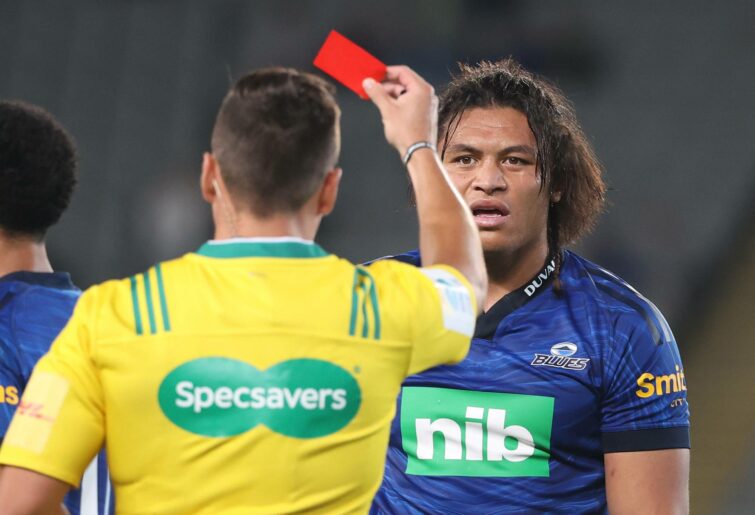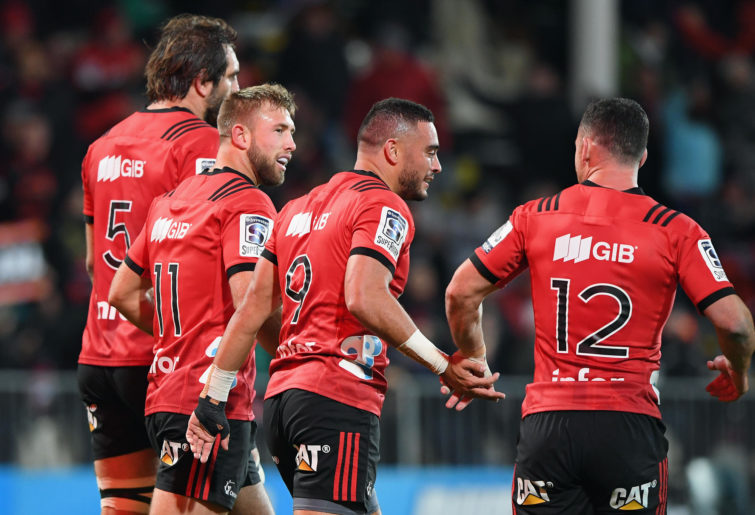Ah yes, the start of the Super Rugby season, where three elements are always in play leading into Round 1.
All teams are equal and everyone is unbeaten, the Waratahs are again the Australian favourites, and some off-season tinkering has resulted in a series of law variations that are definitely going to make the game better and will definitely be enforced in the last five minutes of the final in June with the same focus and accuracy as what we’ll see this weekend in Round 1.
Remember back to the crackdown on scrum feeds back in 2016. Think that one went as nearly all the way through Round 3, and hasn’t been seen since.
It’s all in play for the opening weekend of Super Rugby Pacific and, like clockwork, a coordinated issue of media releases last week from Rugby Australia, New Zealand Rugby, and SANZAAR outlined a series of variations aimed at moving the game on, an attempt to reduce the amount of ‘dead time’ in each game.
“Time restrictions on goal kicks, set pieces and, rucks and a streamlined TMO process are among a raft of fan-centric law innovations set to make Super Rugby Pacific rugby faster and more fluid than ever before,” the releases all said, only differentiating by inserting the respective naming rights holder on either side of the Tasman.
Two major areas of the game covered: the foul play process and the role of the TMO within it, and a series of shot clocks that have actually been in place for a little while now.
There’s also a rethink on deliberate knock-ons, where now only “clear and deliberate attempt to knock the ball forward” will be pulled up.
The universally despised designated water breaks are gone, and opposing scrumhalves will no longer be able to advance past the midline of the scrum, which will prevent a repeat of Faf de Klerk’s violent and unprovoked attack on Nic White in Adelaide last year.
But the big-ticket items are where all the discussion will be around, and while some can definitely have a positive impact, I’m not entirely confident one of them will do anything.
TMOs only ‘interrupt’ play to investigate serious, clear and obvious incidents of dangerous play missed by the match official team
The end of the old ‘check-check’ call, it would seem, and certainly an end to referees having to stop games for an incident that happened four phases ago and which they cleared at the time, but the TMO now has a new angle that he really, really wants to show everyone. Three-minute conversation ensues, reluctant yellow card is issued.
I don’t mind this simplification. It could easily mean the TMO takes five or six or seven phases to interject now, but that will be because they will have to be sure it’s clear and obvious foul play, with no room for maybes.
Thinking it through further, and when considered along with the points following, a TMO interjection now will probably have to end with a red card. And that’s not a bad thing.

(Photo by Fiona Goodall/Getty Images)
Referees can utilise the TMO to make a yellow card decision, but any extended TMO video reviews will take place once the player has left the field, not before the yellow card is issued
and…
The TMO will have eight minutes to either uphold a ten-minute yellow card decision or upgrade it to a 20-minute red card, in which case the player will not return to the field, but can still be replaced
I’ve grouped these two together, because they will work in conjunction.
Clear high tackle, everyone has seen it, and it’s definitely a yellow card as a starting point. But now, the investigation on whether there is or isn’t mitigation, whether it did or didn’t start lower and finish higher, whether it was a reflex accident or comes with significant force, can all happen with the player sat down on the naughty chair, the penalty blown and the game already back underway.
The TMO can then take up to eight minutes to find the compelling evidence to upgrade the yellow to red. I don’t mind this at all.
Even though there was only one instance of a non-carded player cited and suspended in 2022 – Asafa Aumua in Round 9 – we might actually see more yellows for high-ish tackles, even if they don’t end up as reds.
The process encourages acting on what was seen in the moment, with the forensics to happen after the yellow card.
And so maybe this might actually be the trigger for behavioural change around tackle height.
Referees will now also have the power to issue a full red card for deliberate foul play, in which case the player will not return to the field and cannot be replaced
Essentially, we now have the orange card idea that plenty of players, coaches, and commentators called for when the 20-minute red first came in.
The deliberate or worst acts of foul play that everyone agreed shouldn’t be allowed to be replaceable, won’t be.
There was next to no argument about Manu Tuilagi’s red card against Northampton last weekend, but I wonder if that would be one example of a full-red act of foul play.
It looks a pretty decent test case.
Match officials will expect lineouts and scrums to be formed within 30 seconds of the respective marks being set, and the ball to be used within five seconds of a ruck being formed
This will be interesting, because it provoked some player concern when first raised last year.
It seems like it should be enforceable, but it’s also not that difficult to see referee’s discretion stretching a little further in the 78th minute of a tight game than it did 70 minutes earlier.
Coupled with halfbacks not being able to advance past the midline, we should see cleaner, quicker scrums at the very least. But how long before a canny coach starts exploiting the inevitable loophole?
Morgan Turinui made mention last week of opposing scrums just conceding the free kick with no scrum option available, rather than being towelled up in the scrum engagement and being penalised, and you couldn’t rule it out.
Think about this one, too: the Crusaders, down by five points with two minutes to go, earn a penalty and kick to the corner five metres out.
The defensive side, seeing the glint in Sam Whitelock’s eye and knowing exactly what’s coming, stand back from the lineout mark and refuse to set up for 40 seconds.
Concede the free kick. Crusaders can’t kick for the corner. Disarm their mauling threat, and then just muscle-up in the try line defence for the remaining time.
Is it really so implausible?

(Photo by Kai Schwoerer/Getty Images)
The referee will put a stopwatch shot clock on kickers who will have 90 seconds to kick a conversion from the time a try is awarded, and 60 seconds for penalties, from the time the referee signals a shot at goal
Here’s my area of scepticism, and remember here that referees have been advising kickers of these same time limits for several years now.
When World Rugby included the use of shot clocks for kicks at goal when they announced a package of directives in December for implementation from January 1 this year, there was a very specific quote included from director of rugby Phil Davies.
“World Rugby, member unions and competitions will work with broadcasters and match hosts to implement on-screen (stadia and broadcast) shot clocks for penalties and conversions to ensure referees, players and fans can view the countdown,” Davies said, aligning the global body’s thinking with what was already in use in the Sevens World Series, as well as in the United Rugby Championship and in France.
But, as confirmed by RA CEO Andy Marinos in the latest episode of The Roar Rugby Podcast, these visible clocks in stadiums and on TV won’t be implemented for Super Rugby Pacific.
Despite World Rugby’s encouragement and ongoing conversations with broadcasters and match officials, they won’t be in place this Friday night due to technology limitations and existing broadcast arrangements on either side of the Ditch, but will be resolved when the new partnership comes into effect next season.
Sadly, that means this particular variation won’t make any difference in the efforts to move the game along. Again, these time limits on kickers aren’t new.
Anyone can start a stopwatch, but it will only mean something once that stopwatch is visible. When people can see a ticking clock, their perception will be something has been done.
But without that visibility, it’s a hollow platitude that won’t achieve anything. Not this year, anyway.
It will still be built with good intentions, but all fans will see is a goalkicker standing at the top of his mark watching the stadium clock, waiting for a mark only he and the referee know about.






























































































